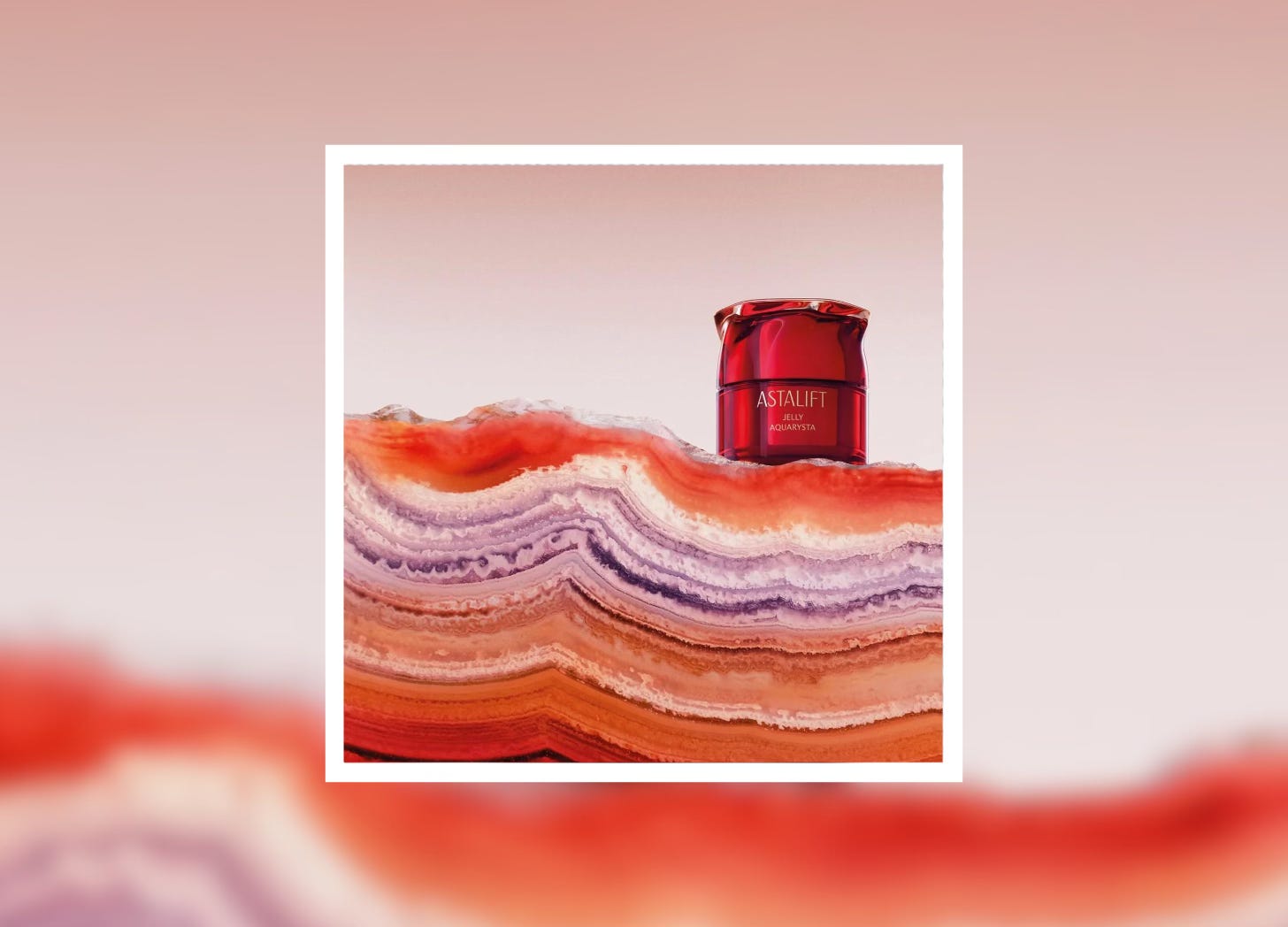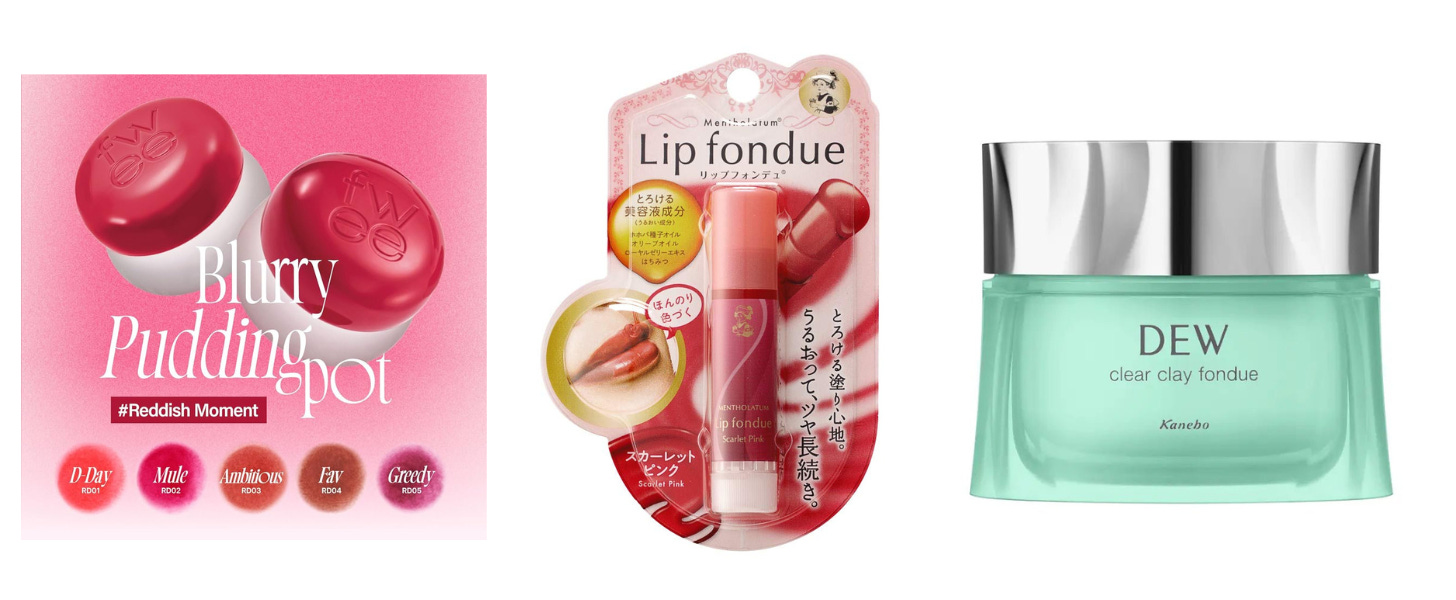
One of the most remarkable business pivots in beauty comes from a company that may surprise you: Fujifilm. In 2007, as traditional cameras began fading into irrelevance, Fujifilm pulled a corporate plot twist few saw coming. Instead of sinking with the ship (ahem, Kodak), they leveraged their vast research portfolio—including a library of 200,000 chemical compounds cultivated through years of R&D in photosensitive materials—and entered the beauty industry. Drawing on their expertise in preserving photographic film, Fujifilm set their sights on the new frontier of anti-aging skincare. The result was Astalift, a skincare brand that helped Fujifilm survive and thrive in an entirely new industry. Fujifilm isn’t the only Japanese business smashing a cross-category lift-and-shift. Beverage giant Suntory, frozen food titan Nichirei, and sake maker Nihonsakari have all successfully ventured into skincare. When industries collapse, the most visionary companies don’t adapt—they evolve, finding new ways to apply their expertise and reinvent their futures.
This ethos of innovation, reinvention and cross-industry exploration has been a hallmark of Japanese beauty for decades (with Astalift continuing to lead from the edge, as I’ll touch on below). J-Beauty’s rich legacy of staying ahead of the curve means that it’s consistently pushing 5-10 years ahead of the Western market—whether it’s ambitious R&D, the integration of cutting-edge technology, groundbreaking retail merchandising or inventive product naming. By the end of 2024, Japan’s beauty and personal care market is projected to generate over $47 billion in revenue. This matters because J-Beauty often has a trickle-down effect, influencing beyond the global beauty industry to impact retail, technology and consumer behaviour across markets.
I was recently in Tokyo and couldn’t resist dipping into the city’s legendary beauty stores to see what’s up. Here are five trends that caught my eye and stayed on my mind:

Fizz Factor: Turns out sparkling water isn’t just for drinking. In Japan, carbonation is making a splash in skincare, sparking a trend that's bubbling into the broader beauty industry. The idea is that carbon dioxide bubbles act kind of like micro-brushes, deep-cleaning pores, sweeping away dead skin cells and firming the skin with a spa-like effect. Products like Tansan Kakumei’s Carbonated Revolution Bubble Mask, Dr. Syuwan's Micro Bubble VC Serum, Dr. Medion's Spaoxy Gel and, yep, Astalift are touting bubbles as a multi-functional ingredient that enhances skincare routines with a sensory dimension.
Idea Spark: By harnessing the power of tactile sensations, brands are creating an immediate, real-time connection with consumers while enhancing perceived effectiveness. Whether it’s the feel of a product, the interface of an app or a service experience, how can your company use sensory engagement to further build trust and amplify impact?
Fast Work: In Tokyo, I saw a shift from beauty ROI being purely driven by results to becoming all about smart efficiency. The era of 13-step routines is over; now, it’s about getting the most bang for your yen. Multi-tasking products like Rohto’s Hada Labo Koi Gokujyun UV White Gel, which packs six functions into one (lotion, serum, cream, sunscreen and more), are the new go-to. This transition reflects a broader trend toward high-performance, streamlined products that resonate with our fast-paced, digital world.
Idea Spark: Whether it's in product design, service delivery or customer experience, businesses can innovate by simplifying processes, merging multiple functions, and creating solutions that deliver more value in less time. How might your company streamline offerings to meet the growing demand for speed and effectiveness?
Chef Speak: Beauty brands are cooking up something new by borrowing from the lexicon of the kitchen—naming products that sound as indulgent as they feel. At the legendary Cosme store in Harajuku, I picked up gifts of Lip Fondue, Drizzle Balm, and a Blurry Pudding Pot, all of which evoke rich, sensory experiences that elevate the everyday beauty ritual into something indulgent, memorable and playful.
Idea Spark: The right words do more than describe—they transport. How can your brand use evocative language to turn ordinary experiences into memorable, emotional connections?
Gum Glam: Oral care in Japan is undergoing something of a glow-up, borrowing heavily from skincare innovations. Rupika's Beauty Tooth Gel is merging dental care with beauty by using ingredients like colloidal gold and centella extract, which are applied directly to gums for wellness benefits. With skincare ingredients like collagen, niacinamide, and probiotics also making their way into oral care, the ‘skinification’ of dental products is blending beauty and wellness into one holistic routine. In fact, over half of respondents to a May 2024 survey by Cosme said that they now consider oral care part of their beauty regime.
Idea Spark: Innovation thrives at the intersection of industries. By crossing boundaries, brands can create new categories and redefine expectations. What can your business borrow from other sectors to innovate and elevate your offerings?
Liquid Assets: Powdered collagen might be familiar territory in the U.S. and U.K., but Japan has taken the concept of ‘beauty from within’ to the next level with RTD beauty beverages, developed by the country’s leading beauty houses. Combining high-quality ingredients with cutting-edge research, Astalift’s White Shield claims to protect against UV damage when taken in the morning, while its Pure Collagen drink is designed to be taken at night. In February this year, Shiseido launched SHISEIDO BEAUTY WELLNESS, a platform that views health and beauty “as a state in which the skin, body, and mind are in harmony.” Its Rootina ‘Time Tune’ range offers a AM/PM system, claiming to support your “beauty rhythmic habits.” And it doesn’t stop at collagen: the global placenta market is expected to grow at a CAGR of 12.4% through 2032. As the Japan Times recently reported, “The beauty drink market is witnessing rapid growth. The more intense the underground research and development race is, the more brands invest in product development…and Japan has the upper hand in R&D, formulations and outstanding quality among many countries.”
Idea Spark: The fusion of wellness and convenience in Japan’s RTD beauty beverages offers a lesson in consumer-centric innovation. These products go beyond beauty needs to integrate seamlessly into daily life, creating a holistic experience that resonates with modern, health-conscious consumers. How can your brand develop offerings that turn everyday habits into opportunities for enhanced well-being?








